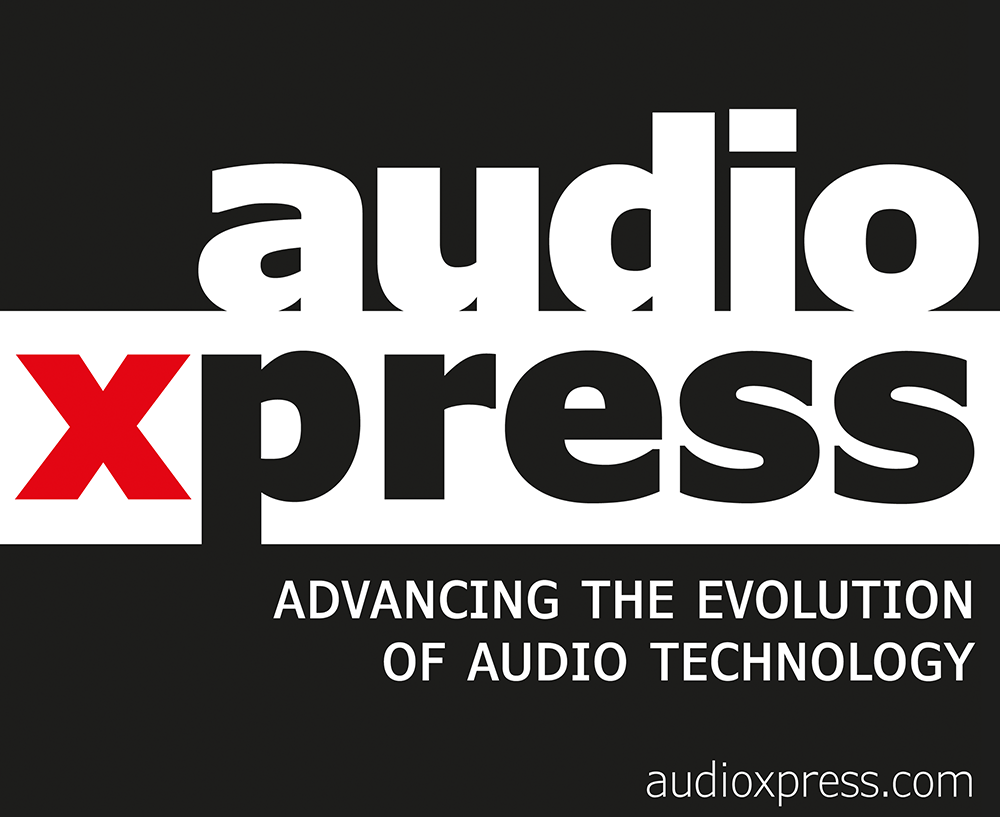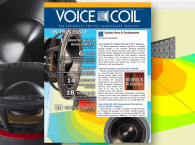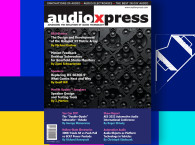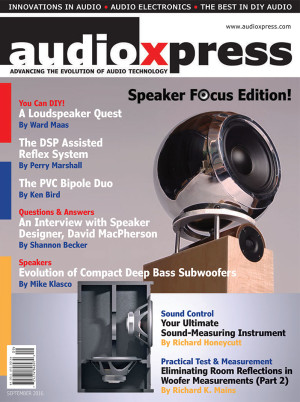 It’s that time of the year again. September means our Speaker Focus edition is here and once again we have a powerful selection of articles on the topic, starting with a great recap from Mike Klasco on the Evolution of Compact Deep Bass Subwoofers. This is an update of an historical article Klasco wrote years ago but was never featured in the pages of this magazine. This article provides an abbreviated history of deep bass, woofers, and subwoofers that delivered more wallop in less space than their less capable competition. From the early roots of sound reinforcement solutions for PA applications to car audio and home-theater, Klasco recalls how over the last 50 years, various researchers have sought ways to get more bang for their bucks out of the small woofer box. Techniques include using unique speakers, bass reflex venting, bandpass and other box-tuning techniques, unique box stuffing materials more compliant than air, trick amplifier servo feedback circuits, and signal processing including psychoacoustics.
It’s that time of the year again. September means our Speaker Focus edition is here and once again we have a powerful selection of articles on the topic, starting with a great recap from Mike Klasco on the Evolution of Compact Deep Bass Subwoofers. This is an update of an historical article Klasco wrote years ago but was never featured in the pages of this magazine. This article provides an abbreviated history of deep bass, woofers, and subwoofers that delivered more wallop in less space than their less capable competition. From the early roots of sound reinforcement solutions for PA applications to car audio and home-theater, Klasco recalls how over the last 50 years, various researchers have sought ways to get more bang for their bucks out of the small woofer box. Techniques include using unique speakers, bass reflex venting, bandpass and other box-tuning techniques, unique box stuffing materials more compliant than air, trick amplifier servo feedback circuits, and signal processing including psychoacoustics.We also have a great DIY project from a regular contributor from The Netherlands, Ward Maas, recalling how he managed to fulfill one of his speaker building dreams. On a Loudspeaker Quest, Maas explains how he managed to turn a simple vision of a weird “tube-like thing” into a powerful design. The speaker combines two 15” WVL bass drivers facing each other inside the tube and sharing a unique compartment, a Visaton B200 full-range loudspeaker facing the listener in the middle, and a Dayton 12” waveguide driven by a 1” Selenium D220TI compression driver on top. The opening at the front and the back areas of the tube are as large as possible to avoid being called a port, while the top section uses a Karlson cut-out to minimize tube resonances. The Dayton waveguide with the Selenium driver also has a single-sided acoustical output and does not suffer from any influence from the backside. This unique experiment shows how combining fun, a fair amount of resolve, and a solid knowledge of speaker design can generate a powerful formula.
And maybe because we felt inspired by the previous “tube speaker,” we decided it was time to recover a very simple DIY project from Ken Bird, the author of many inspired designs. This time, Ken explains how to build the PVC Bipolar Duo, a very affordable and easy-to-construct system. The design is able to maintain above-average, full-range sound without the need for a crossover or other equalization components but still uses two drivers in a bipole arrangement, providing both the bass enhancement of the transmission line and the open airy sound of the bipole in a quasi-chambered transmission line design. Intrigued? Read on.
Still on the project side, we have an in-depth article written by Perry Marshall, explaining how to build a DSP Assisted Reflex System to get increased bass response. As he explains, “vented systems are in chronic overload. This article shows how, by applying low-cost digital signal processors (DSPs) to passive radiators, you can extend bass an octave below what is normally considered practical. At the same time you can increase power handling and maximum output, and squeeze high performance from tiny systems.” We saw the huge potential for this technique and believe our readers will enjoy following the author’s approach.
Next, we have the second part of Richard K. Mains’ techniques on how to eliminate room reflections in woofer measurements. In Part 1 of this Practical Test and Measurement article, the author discussed the method of waveform compression using ideal Butterworth characteristics. In this part, he applies the techniques to real woofer measurements that he’s made and also provides instructions on how to use the program he created to carry out these calculations.
We also feature our regular Question & Answers column, in which we interview David MacPherson, owner of Studio Electric. In “Life in a Speaker Workshop,” MacPherson explains how he evolved from early work in a hi-fi shop, a recording studio, and being the sound mixer at a nightclub with live music to building complete professional sound systems for “unsuspecting musicians and concert promoters.” After more than 25 years successfully building pro sound speaker systems, MacPherson finally decided to design and build high-end home hi-fi speakers and create his own speaker workshop.
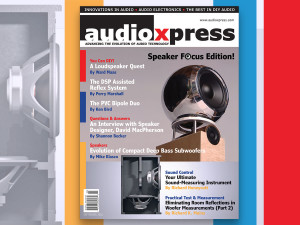 Also featured in the audioXpress September 2016 issue, Richard Honeycutt explains “Output Transformers for Hollow-State Amplifiers: Design Parameters;” Ron Tipton continues his series on Room Correction, this time using Sonarworks and Ultimate Equalizer software; and our Sound Control column focuses on using our own hearing as the ultimate sound-measuring instrument.
Also featured in the audioXpress September 2016 issue, Richard Honeycutt explains “Output Transformers for Hollow-State Amplifiers: Design Parameters;” Ron Tipton continues his series on Room Correction, this time using Sonarworks and Ultimate Equalizer software; and our Sound Control column focuses on using our own hearing as the ultimate sound-measuring instrument.Plenty of reasons to access the September 2016 edition right now and download this edition here: www.gotomyxpress.com
Of course you can also subscribe here: www.audioxpress.com/page/audioXpress-Subscription-Services.html
And you can also buy a single printed issue at www.cc-webshop.com
